We
recently reviewed the Coolpad Dazen 1 (Review), a budget workhorse.
Coolpad has another, more expensive, phone which sells for just under Rs. 20,000 - the Dazen X7. This phone has an
octa-core Mediatek MT6595M processor, which we haven't tested yet.
Moreover, the design of the Dazen X7 incorporates metal edges on a predominately
glass body to create a premium look.
Let's find out if the
Dazen X7 can distinguish itself to be a serious contender, especially in a
market flooded with options. We are really
interested in what Coolpad, known primarly for being an OEM, can do when it starts promoting its own
devices instead of avoiding the limelight.
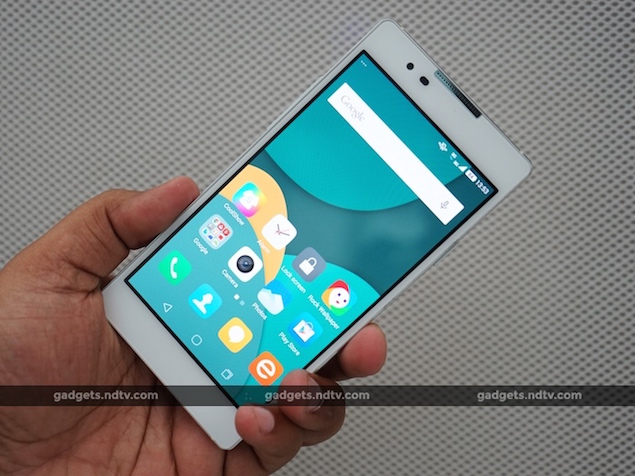
Look and feel
At
first glance, the candybar design of the Dazen X7 seems impressive
thanks to its chamfered metal edges and glass back.
It has great build quality and feels sturdy. Our white review unit
literally glistened in the light and caught a lot of reflections on the
glass as well. With dimensions of 146.6x73.6x6.5mm, the Dazen X7 is not
too big to for a phone with 5.2-inch screen, but the sharp edges dug into
our palms when we were holding it. The 131g weight feels reassuring. As far as
phones with 5.2-inch screens go, we still think that Motorola hit the
nail on the head with the Moto X (Gen 2) (Review | Pictures) with respect to the
ergonomics.
On the rear, the primary camera and flash are placed
on a metal plate that juts out, which makes them susceptible to scratches.
The right side of the phone has two slots, one accepts a Micro-SIM card
whereas the other is a Nano-SIM slot that doubles up as a microSD card holder.
This side also has the power button. The volume rocker lies on the
left. Both buttons have sufficient tactile feedback.
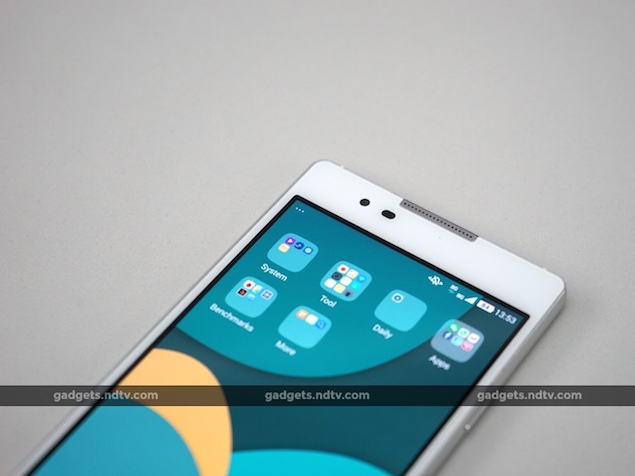
The
3.5mm jack and a microphone are on the top of the
Dazen X7. The bottom has the Micro-USB port and two rows of machine-drilled holes on either side. The phone has a mono speaker therefore only
the right side emits sound. In fact, in an anomaly that could be
specific to our review unit, the holes hadn't been punched all the way through on the left,
which looked odd to say the least. The earpiece is above the
screen along with the proximity sensor, ambient light sensor,
and front camera. Coolpad makes use of on-screen buttons
for navigating through the operating system.
Specifications and software
Coolpad
uses an octa-core Mediatek MT6595M SoC clocked at 1.7GHz with PowerVR
G6200 graphics. The MT6595M is a toned-down version of the
MT6595, which we tested first on the Lenovo Vibe X2 (Review | Pictures). The phone also has
2GB of RAM and 16GB of internal storage space which can be expanded by up to 32GB using a microSD card. It also supports USB OTG,
if you run out of space.
The 13-megapixel primary camera has a
fast aperture speed of f/1.8 and can shoot 1080p videos at 60fps. On the
other hand, the front camera can capture 8-megapixel selfies. The Dazen
X7 can connect to Indian 4G networks but only using the primary SIM. Other connectivity options include Wi-Fi a/b/g/n, Bluetooth 4.0,
and A-GPS.
The 5.2-inch Super AMOLED screen has a resolution of 1080x1920 which translates to a pixel density of
441ppi. It is rich in colours but has a warm tone. The
sunlight legibility of the phone is pretty good but when viewed at any
angle, the colours start degrading. Our only gripe with the display is
that it doesn't extend up to the bezel of the phone, thereby creating a black
border that looks really distracting.
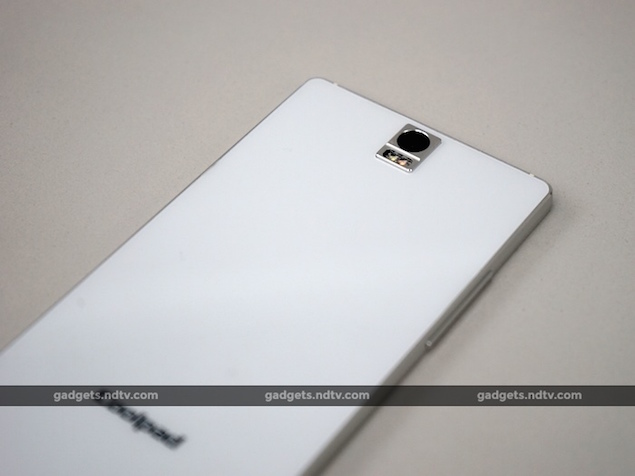
The Coolpad Dazen X7 runs the now-outdated Android 4.4.2, with a custom skin on top. Like the Dazen X1, even the Dazen X7 gives users the option to switch between a traditional Android layout with an app drawer or one without it where all the applications - default and downloaded - are lined up on the home
screens. The icons have a flat, colourful design. The
most annoying thing about the custom skin is that the capacitive buttons
can be pulled up or hidden by swiping up or down, respectively, from
the bottom of the display. Many times, when trying to perform this
action, we would accidentally hit one of the icons in the dock instead, which
would then open the corresponding app. Also, all the notifications are
bunched up inside the notifications shade thereby adding an
extra step to the process of dealing with any particular notification.
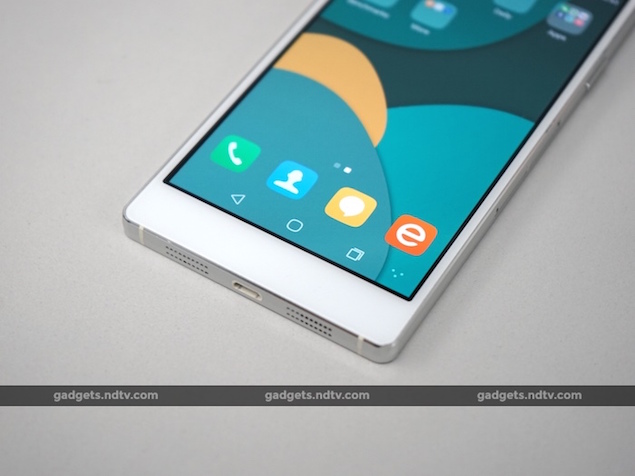
Smart control
options in the skin allow users to double-tap to wake the
phone, or jump directly into specific apps by tracing gestures -
like M to play music or C to open the camera. A theming app called
Coolshow is available for customisation. Coolstore is a curated app
store by Coolpad, although it is pretty barren at the moment. Other
third-party apps include WeChat, Whatsapp, Snapdeal, Facebook, Swiftkey
and WPS Office.
Performance and camera
While we didn't face
any slowdowns during our test period, the phone did heat up when we played
games and ran intensive benchmarks. That aside, the MT6595M proved to be a pretty
capable SoC and the benchmark numbers also show that.
In AnTuTu and Quadrant, the phone scored pretty high scores of 44,854 and 17,089
respectively. In fact, the AnTuTu score is within
touching distance of what the OnePlus One achieved. Even the 3DMark Ice
Storm Unlimited and GFXbench scores of 12,780 and 18.3fps were fairly
impressive.
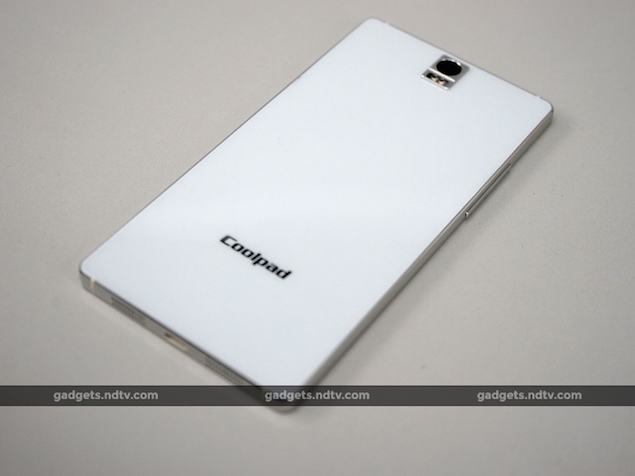
The phone played all the videos we threw at it
without any fuss. The sound from the loudspeaker was pretty tinny and
low, and also crackled at high volume. Our review unit's box didn't
include a headset so we used our own to test the audio quality and we
had no complaints. The cellular radio struggled to latch on to a 4G network and the connection kept
switching to 3G. The sound quality in calls wasn't too great either.
The battery lasted 8 hours and 35 minutes in our video loop battery
test, and in regular usage we managed to squeeze at most a day out of it with
4G/3G being constantly active.

(Click for full size image)
The 13-megapixel rear camera is an
above-average performer. Under bright sunlight the details are pretty
clear and the noise levels are also low. However if the light is even
slightly dim, which we experienced a lot thanks to the overcast
monsoon conditions in Mumbai, the camera struggles to expose areas under focus. The key elements in our sample shots were underexposed.
In low light situations, despite the fast f/1.8 aperture, the
camera tends to generally lower the ISO and shutter speed to around 1600 and 1/10 respectively. This means that the resulting images
are blurry and full of noise because the camera cannot handle shakes. Thankfully, the camera app
has a Pro mode that gives users full control over the ISO and shutter
speed settings. The 8-megapixel front camera on the other hand is great
for selfies. The video quality of both the cameras is average at best.
Verdict
Priced
at Rs. 17,999 and available exclusively on Snapdeal, the Coolpad Dazen
X7 has a tough battle ahead. It is not very impressive, and
phones such as the Asus Zenfone 2 (Review | Pictures), OnePlus One (Review | Pictures), and Xiaomi Mi 4 (Review | Pictures) are all
available in and around that price range. Coolpad has priced the phone a
little too high in our opinion. Having said that, the phone does many things
right.
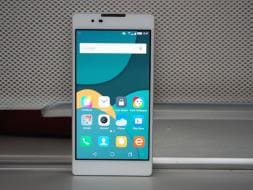
Coolpad Dazen X7 in pictures
 Google Play Store Blocks 17 Unregistered Crypto Exchanges in South Korea, Apple May Follow27 March 2025
Google Play Store Blocks 17 Unregistered Crypto Exchanges in South Korea, Apple May Follow27 March 2025 Google's Android OS Will Reportedly Be Developed Privately as Company Shifts Strategy27 March 2025
Google's Android OS Will Reportedly Be Developed Privately as Company Shifts Strategy27 March 2025 Android 16 Developer Preview 3 Reportedly Enables Screen-Off Fingerprint Unlock on All Pixel Phones24 March 2025
Android 16 Developer Preview 3 Reportedly Enables Screen-Off Fingerprint Unlock on All Pixel Phones24 March 2025 WhatsApp Reportedly Developing AI-Powered Rewrite Feature, Two-Way Voice Chats with Meta AI21 March 2025
WhatsApp Reportedly Developing AI-Powered Rewrite Feature, Two-Way Voice Chats with Meta AI21 March 2025 Netflix Announces Spirit Crossing, a 'Cozy MMO' Coming to Netflix Games in 202521 March 2025
Netflix Announces Spirit Crossing, a 'Cozy MMO' Coming to Netflix Games in 202521 March 2025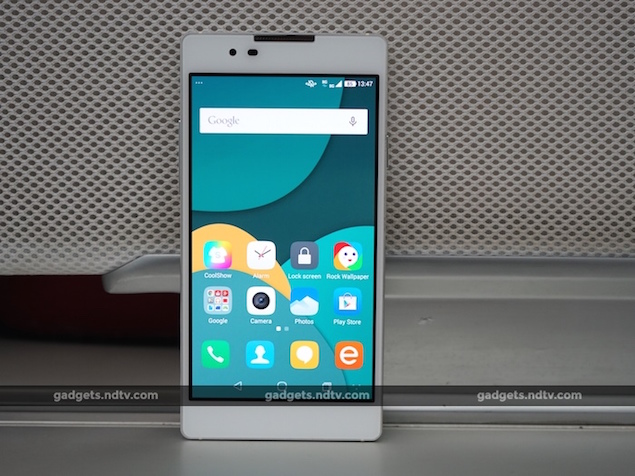




![Gadgets 360 With Technical Guruji: Ask TG [ March 22, 2025]](https://c.ndtvimg.com/2024-12/5s52e4k_-ask-tg_640x480_14_December_24.jpg?downsize=180:*)











